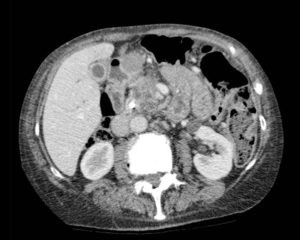Diseases like cancer need early detection for complete recovery. When your physician gets to know about the exact condition of the malignant cells, taking the appropriate route of treatment becomes convenient.
On the flip side, late detection of fatal diseases like cancer can put your life to risk. The latest study on imaging surveillance’s impact on cancer detection has opened a new horizon for the medical care domain.
Imaging and preventing screening methodologies have reduced death risks for fatal diseases like cancer. Imaging helps in the early detection of cancer and makes treatment processes more effective. Most people consider pancreatic cancer to be incurable. When detected at an early stage, pancreas cancer can be treated effectively as well.
Annual imaging has made the detection of high-risk diseases easier and death risks lower.
Therefore, people who do not go through this process have a higher mortality rate from cancer than those who undertake annual imaging.
An article published in the Journal of Clinical Oncology recently established the same claim on firmer grounds. In this article, the experts presented a comparative study of people undergoing the annual imaging process with those missing out on the process.
They compared the patients’ outcomes and diagnoses. One group of the participants was the one who took part in the CAPS5 study (done for pancreatic cancer) where the participants went through annual imaging under the careful vigil of the researchers.
In their research paper, the experts concluded that patients participating in annual imaging programs possess less risk of late detection of pancreatic cancer.
They further added that the symptoms of pancreatic cancer appear at a later stage when few options of cure and treatment remain left. Since the symptoms do not surface during the early stages of the disease, patients remain entirely ignorant of their malignancy.
Michael Goggins is an MD and the senior study author of this paper. Sol Goldman, director of Pancreatic Cancer Early Detection Laboratory, is also a professor at Pancreatic Cancer Research. Both the veterans have remarked that detection of pancreatic cancer at an early stage is critical for monitoring and proper treatment.
The duo also boasted the CAPS surveillance suggestions stating that people matching the criteria should opt for regular screening to keep the risk of pancreatic cancer at bay.
They further mentioned that the survival chance of the patients whose pancreatic malignancy gets unearthed at an early stage during screening has a high chance of recovery. On the other hand, people who miss out on their opportunity of imaging, have a higher death risk at any time.

The Study
From 2014 to 2021, 1461 patients opted for the CAPS5 study. The researchers chose these people based on certain criteria. They preferred people with a genetic variant making them more vulnerable to pancreatic cancer. The group of participants also had people with first-degree relatives diagnosed with pancreatic cancer.
In short, the researchers made sure that only high-risk people get to participate in the study to enhance the accuracy level of the outcomes. Once the sample was ready, the participants had to go through one of the imaging procedures from endoscopic ultrasound, CT, or MRI.
The Outcomes
When the imaging was going on, the researchers found that 10 participants were suffering from PDAC (Pancreatic Ductal Adenocarcinoma). One of these ten patients immediately left the process and got detected with metastatic disease after four years.
However, the rest of the nine participants continued with the surveillance method. Out of these, researchers found seven patients with stage 1 disease and only one with stage 2 conditions. The team also had one patient with stage 3 conditions.
The experts combined the outcomes of the CAPS cohort (1998) with these results. At the summative level, the results clearly indicated a pattern.
The researcher explained this pattern as low risks associated with regular imaging. The results further showed that death risk reduces by 73.3% for patients undergoing imaging. In easy words, this means an individual patient’s lifespan expansion by at least 5 years.
The researchers further added that the outcomes of their study match with CAPS surveillance reports and recommendations. They confirmed that imaging should not remain limited to high-risk patients with identified pathogenic mutations.
Imaging is critical for people with even the slightest potential of malignancy. The team also mentioned that further research and studies would make the conclusions clearer. However, they affirmed that there could be no reason to doubt the ability of imaging to reduce the risk of late detection of unusual cancers like PDAC.
At sepStream®, we make sure that you get the best software for imaging solutions. Enhancing the reach and depth of medical care has always remained our motto. We offer Ai-integrated intuitive, affordable solutions to help you cater to more people. We remain committed to timely delivery all the time. Regular up-gradation of technology remains integral to our business operations.